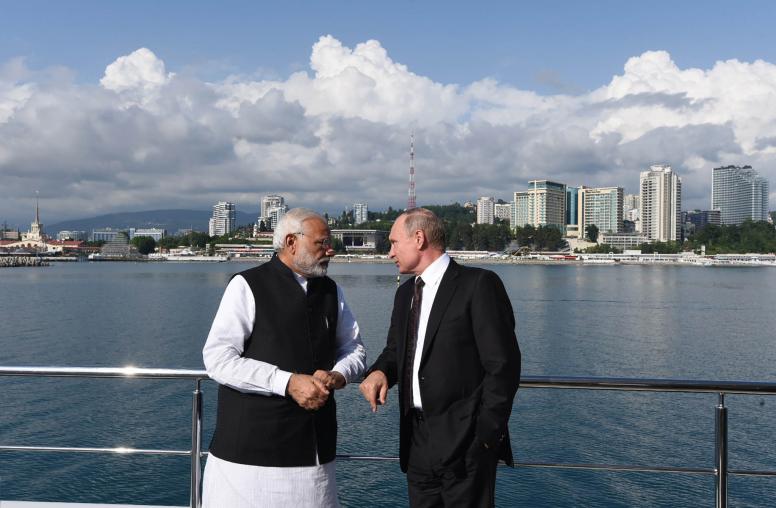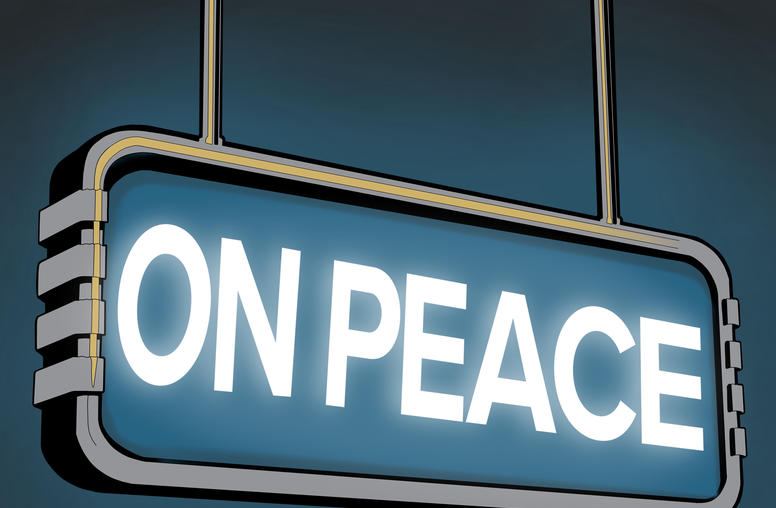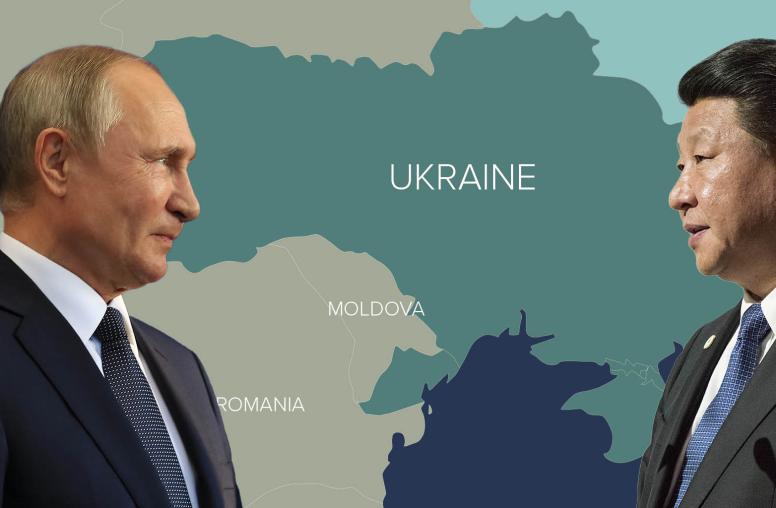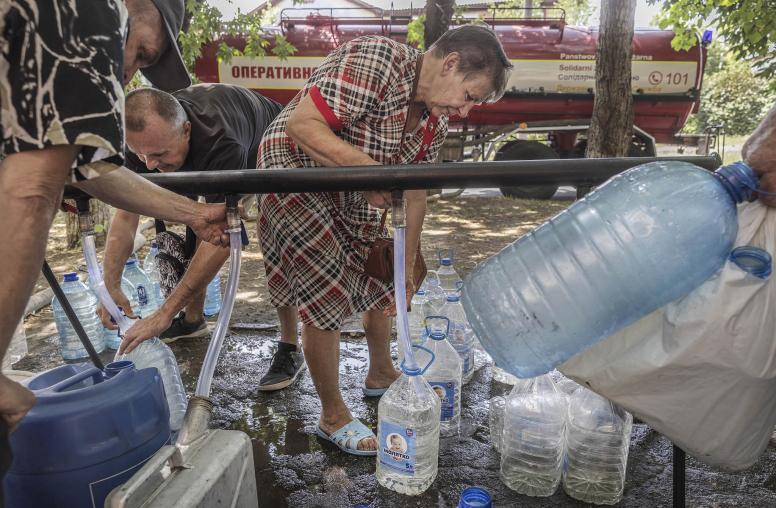Ukraine’s Year of War: What Does It Mean?
USIP’s Ambassador William Taylor: Shared traumas now weld Ukrainians’ identity and unity.
One agonizing year after Russian President Vladimir Putin launched his all-out war on Ukraine, the pictures and stories of brutal inhumanity have at times been numbing: a 21st-century resurgence in Europe of violence that recalls the Nazi Holocaust or the worst excesses of the Balkan wars. For average citizens as well as policymakers, the deluge of news and the layers of concerns — for Ukraine, for European stability and for a world free of such warfare — can make it hard to pull out key focal points. With no end to this conflict now in sight, USIP's Ambassador William Taylor discusses how we might assess this past year and focus on next steps.

Taylor, a career diplomat and former U.S. ambassador to Ukraine, heads USIP’s team working on the war and related issues of European security and global strategic stability.
What should we take away from a full year of Vladimir Putin’s escalated war on Ukraine?
By far the essential fact of this war has been the extraordinary mobilization of 40 million Ukrainians in defense of their identity as a people and a nation. Of course, we knew before last February that Ukraine would fight, as they have resisted Vladimir Putin’s seizure of Crimea and Ukraine’s Donbas region already for eight years. What has taken much of the world by surprise has been how dramatically Ukrainians have outfought a vastly larger, more heavily armed Russian military. And much of the explanation for this is in the utter determination by the Ukrainians to preserve their now 30-year-old independence from Moscow’s rule. Putin is effectively fighting a 19th-century style imperial war, a war to recolonize Ukraine — and the Ukrainians will not stop fighting until they defeat that effort.
A powerful reason for all this is that the Ukrainians have shared repeated traumas over the past 110 years — two world wars, the Soviet-era Chernobyl disaster, Stalin’s purges and what Ukrainians remember as the Holodomor — literally “death by starvation” inflicted by Stalin, in which 4 million Ukrainians died in 1932 and 1933. These are people who share a sense for what they’ve suffered in the past, largely at the hands of Russia, and for what they have to lose now. So Vladimir Putin’s all-out assault last year consolidated the Ukrainian sense of national identity and unity. It triggered a whole-of-nation fight for their freedom.
Frankly, a multiplier effect these past 12 months has been brutality — the incomprehensible, gratuitous savagery of the killings and torture by Russian troops, the Wagner Group mercenaries and others. We can imagine how any of us would feel if some outside group came into our communities and committed these brutal, really unspeakable, atrocities, leaving the bodies of our dead neighbors in the streets or in mass graves. These atrocities lend a moral clarity and imperative to this war that people feel far beyond Ukraine. Just one example is the enormous sympathy and support in Europe, notably Poland, for millions of Ukrainian civilians — among a total of 14 million displaced — who have fled for safety, and whom Poles, Romanians, Slovaks, Moldovans and others are sheltering in their own homes and communities.
In short, Ukrainians are welded in unity by this assault on them. They have the energy, the leadership, the military skill, the commitment of civil society and the general population to win this war. And they feel it. That is the main takeaway, one year on.
Then what does the current moment, a year into this, suggest for the coming months? What can we reliably foresee, amid the fog of war?
After the Ukrainians drove back the Russians so definitively last fall, the winter has seen this grinding slugfest in which the Russians are bombarding Ukraine’s cities in hopes of collapsing Ukraine’s defenses, and Ukrainian soldiers at the front are making the Russians pay a steep price for little gain. We saw Putin struggle to conscript another 300,000 Russians to revive his offensive. And what we’re all hearing from the professional military analysts is that a key next question is, which side will be able to gear up first for a successful advance on the ground? That’s why the huge attention these past months to what military materiel Ukraine’s allies will provide, how many Ukrainian soldiers can be trained and how fast. The Ukrainians hope to seize that initiative with new army formations and break through Russian lines to push the Russians out of their country in the coming months.
Americans, Europeans and others understand that the stakes in this conflict are very high and go far beyond Ukraine. The Ukrainians have become the front-line combatants not only for their own independence, but for security in Europe and the United States, and indeed for the principles of the U.N. Charter, which the world has been trying for 80 years to make the frame for our international relations. Ukrainians are our critical defenders of a world shaped by law rather than by the rule of armed power. So quite simply, three goals coincide: Ukrainians’ freedom, Europe’s security from wars of aggrandizement, and the world’s ability to strengthen a rule of law and prevent the capricious, mass slaughter of innocents. Advancing each of them means ensuring that Russia’s seizure of Ukraine is reversed and that the Russians are pushed out of Ukraine.
As for the coming months, this reversal won’t happen immediately. Putin’s continued belligerence, as in his state-of-the-nation speech the other day, makes clear that the Ukrainians will have to drive his forces out, which they are committed to doing. Every kilometer of progress in the Ukrainians’ defense increases the chances of getting Russian leaders to the point where some of the withdrawal could be won diplomatically. And if the Ukrainians push the invasion force far back, that could open a path for some kind of conversation, some kind of diplomacy that could finish the job — get the remaining Russians out of Ukraine — without further bloodshed.
Diplomacy and dialogue are how most — although not all — wars end, and Ukraine, the United States and NATO have stated their readiness to use that path whenever they have Russia as a genuine partner in that process. But there is no path for dialogue and diplomacy when a belligerent is committing the heinous, gratuitous slaughter — to call it what it is — that Putin is now inflicting on Ukraine. The time for diplomacy may come, but it is not now.



